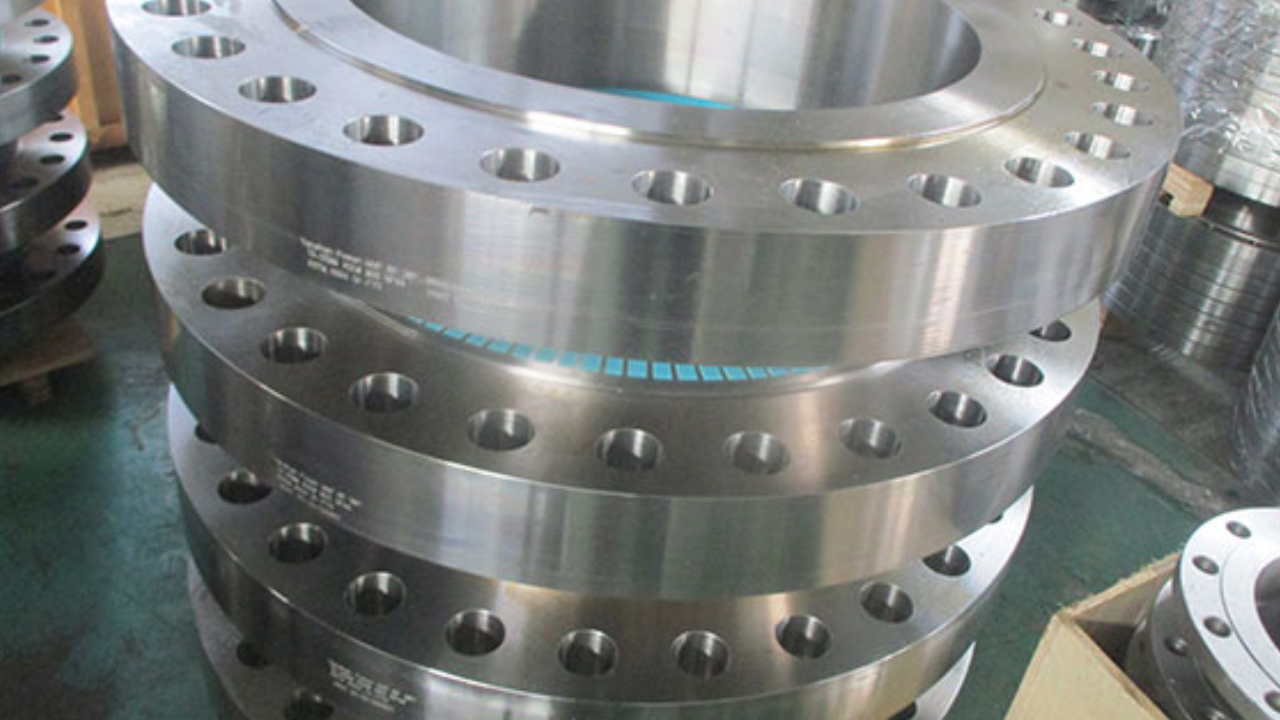Flanges are crucial components in various engineering and industrial applications, serving as connecting elements between pipes, valves, and other equipment. These circular discs or rings with evenly spaced holes for bolts are integral for creating leak-proof connections and supporting the structural integrity of a system.
The pressure produced within a pipe system is intended to be withstood and contained by flanges. Flanges can withstand a range of pressure levels because of their sturdy design and material choice. This is crucial for ensuring the safety and reliability of industrial processes, especially in applications involving high-pressure fluids or gasses.
Flanges play a vital role in distributing the stress generated within a piping system. When pipes are subjected to internal pressure or external forces, flanges help evenly distribute the stress along the bolt circle. This distribution of stress prevents localized points of weakness, enhancing the overall strength and durability of the system. Flanges facilitate the creation of special connections within a piping system.
Key Functionalities of Flanges
Flanges, the second most popular joining method after welding, provide a dependable means of joining pipe systems with the various parts, valves, and apparatus of almost any processing system. Flanges offer a multitude of functionalities that contribute to the efficiency and reliability of fluid and gas transport systems. Here we will discuss the major key functionalities of flanges.
Connectivity
Flanges act as connectors in piping systems, facilitating the assembly and disassembly of components. Their design allows for a simple and efficient method of joining pipes, valves, pumps, and other equipment. The flange's flat surface provides a stable platform for creating strong connections, ensuring that the system remains intact and leak-free.
Leak Prevention
One of the primary functions of flanges is to prevent leaks in a piping system. By connecting two pipes and compressing a gasket between them, flanges create a tight seal. The gasket material is selected based on the specific requirements of the application, considering factors such as temperature, pressure, and the nature of the fluid or gas being transported. This sealing capability is essential for maintaining the integrity of the system and preventing environmental contamination.
Easy Maintenance
Flanges facilitate easy maintenance and repair of piping systems. The bolted connection allows for the quick disassembly of components without the need for specialized tools. This feature is particularly valuable in industries where downtime must be minimized. Technicians can swiftly access and replace damaged components, reducing the overall maintenance time and operational disruptions.
Versatility
Flanges are available in a wide range of materials, sizes, and pressure ratings, making them versatile components suitable for various applications. Common materials include carbon steel, stainless steel, and alloy steel, each selected based on the specific requirements of the system. Flanges are also designed to accommodate different pressure levels, ensuring compatibility with diverse industrial processes.
Alignment and Centering
During the assembly of piping systems, flanges aid in aligning and centering pipes accurately. The flat and smooth surfaces of the flange facilitate precise alignment, ensuring that the pipes are properly positioned. This alignment is crucial for preventing stress on the pipes and maintaining the overall stability of the system.
Facilitation Special Connections
Flanges are instrumental in creating special connections within a piping system. For instance, they allow the attachment of expansion joints, valves, and other accessories. This flexibility enables engineers to design complex systems with specific functionalities, adapting to the unique requirements of different industries.
Sum Up
The selection of appropriate flanges based on the specific needs of an application is crucial for ensuring the optimal performance and longevity of industrial systems. Engineers and technicians must consider factors such as material compatibility, pressure requirements, and environmental conditions to choose the right flanges for their applications. For example, they allow the attachment of expansion joints, valves, and other accessories. This feature enhances the flexibility of system design, enabling engineers to incorporate specific functionalities and adapt the system to the diverse requirements of different applications.


